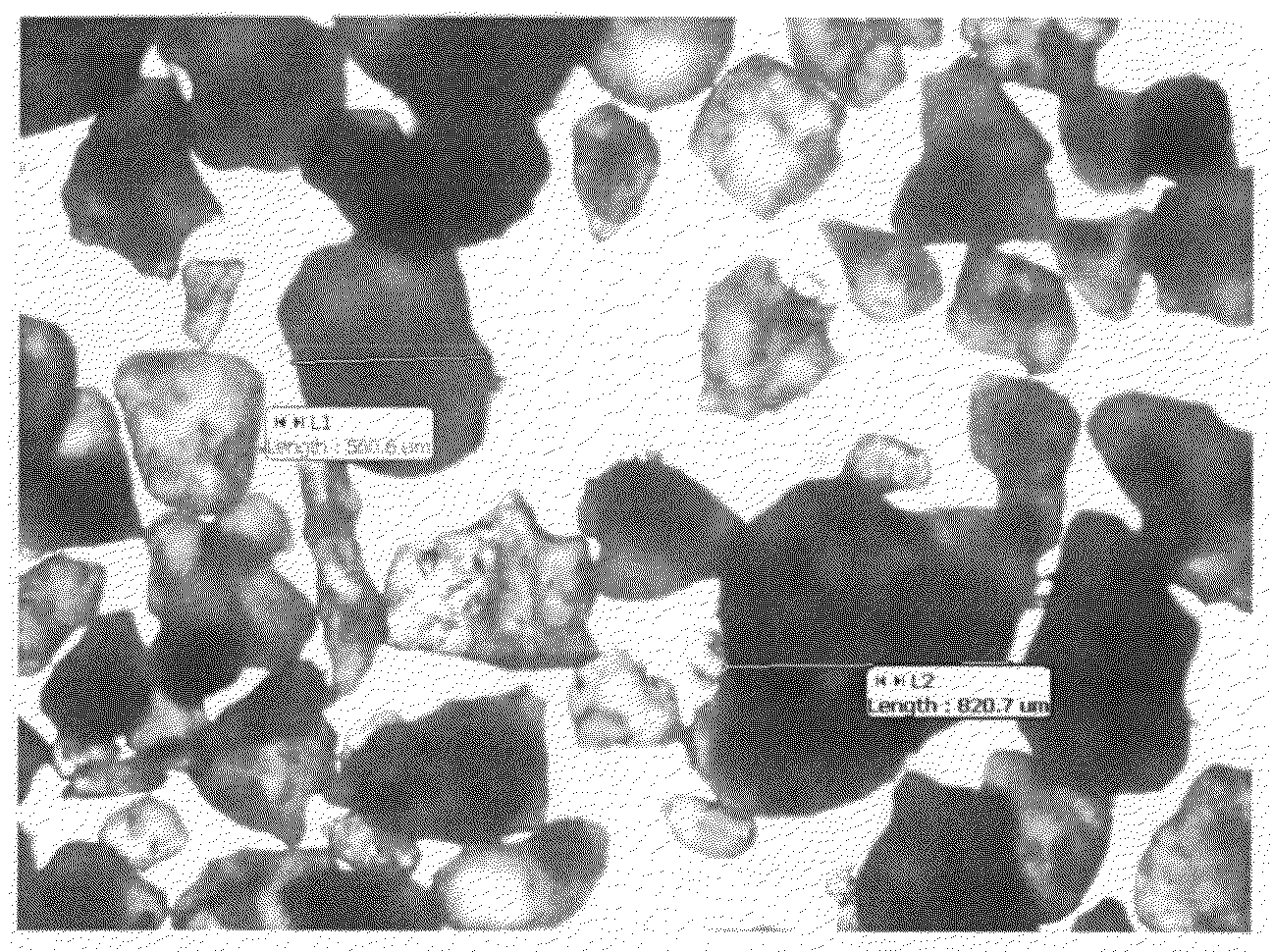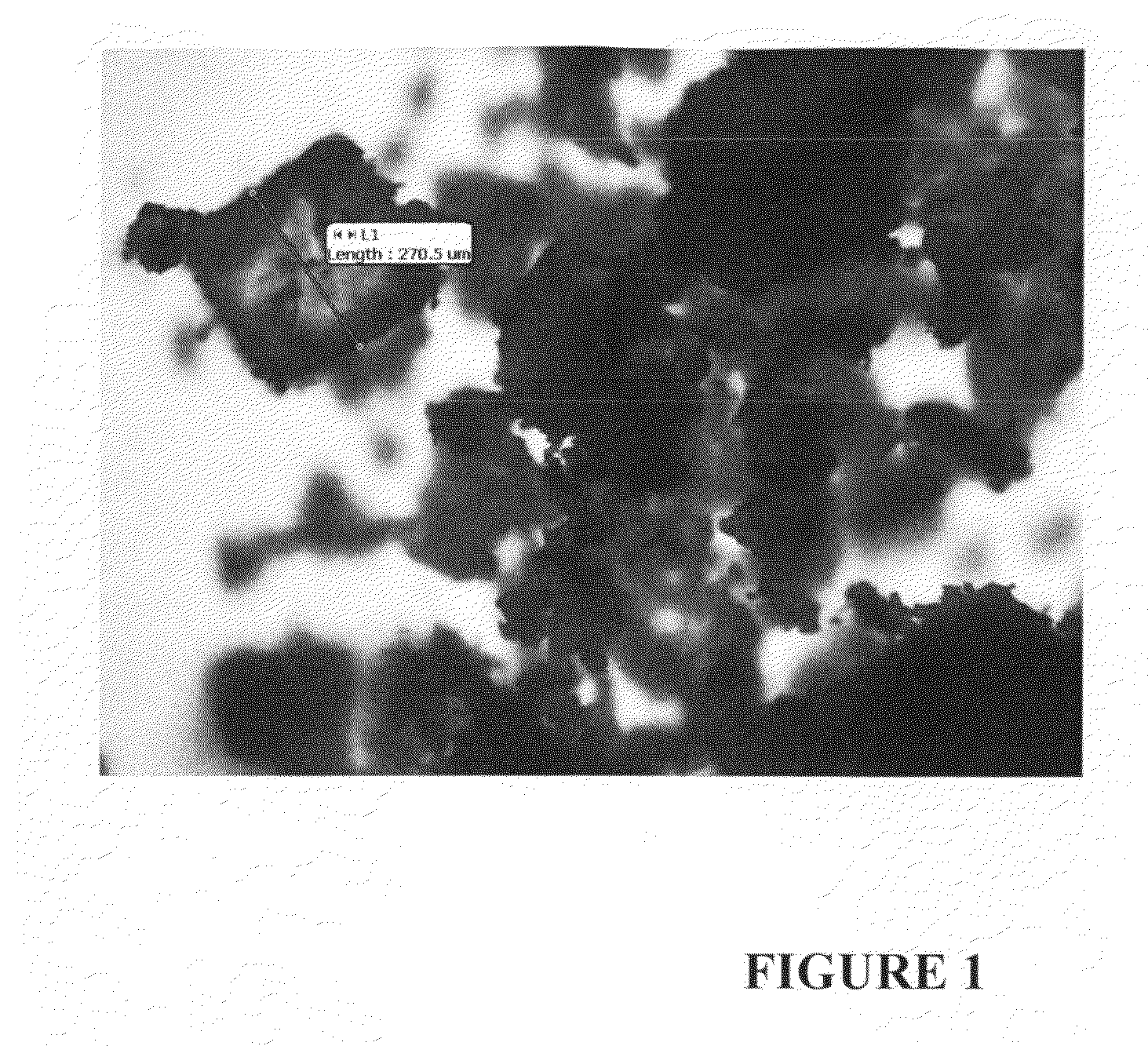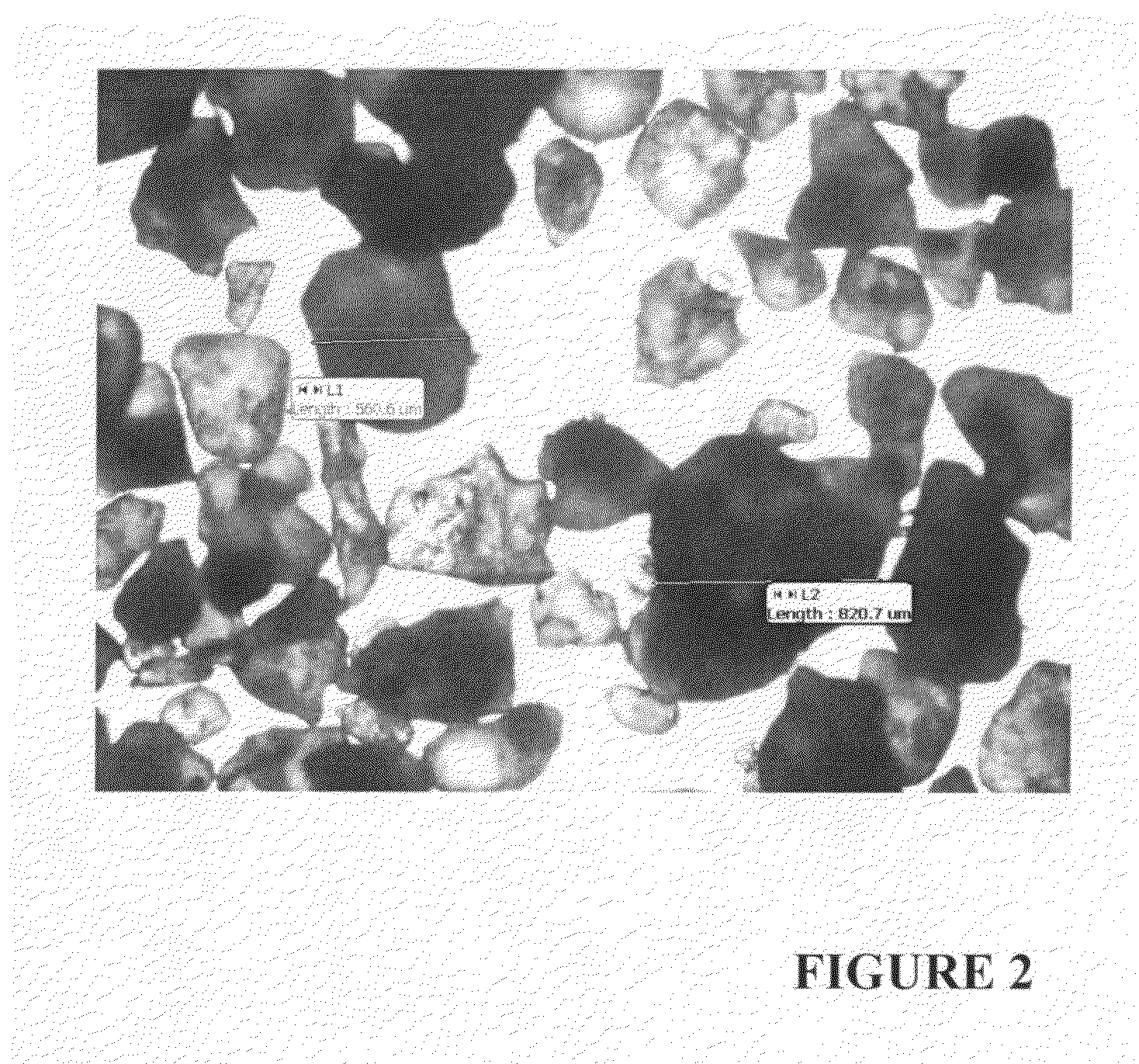Enzyme delivery systems and methods of preparation and use
a technology of enzyme delivery and enzyme preparation, applied in the field of coated digestive/pancreatic enzyme preparation, to achieve the effect of enhancing administration properties and increasing stability
- Summary
- Abstract
- Description
- Claims
- Application Information
AI Technical Summary
Benefits of technology
Problems solved by technology
Method used
Image
Examples
example 1
Increased Flow Properties and Pourability of an Exemplary Encapsulated Digestive Enzyme Preparation
[0170]Before the exemplary methods and preparations of the present disclosure is applied, examination of an unprocessed, raw enzyme preparation (Scientific Protein Laboratories (SPL) of Wanakee, Wis.) revealed that it contained significant variability in particle size and irregular morphology, as shown in an electron micrograph of the particles as pictured in FIG. 1. Some crystalline salt particles are also visible. The raw enzyme does not pour as it clumps and is difficult to measure due to the uneven surfaces, and jagged edges. The raw preparation is also not suitable for lipid encapsulation without further processing because the raw product contains particles both too large and too small for proper encapsulation. The sieved enzyme, while more uniform in size, continues to exhibit uneven surfaces and clumps while pouring.
[0171]FIG. 2 shows the coated enzyme preparation produced follo...
example 2
Stability of an Exemplary Encapsulated Digestive Enzyme Preparation: Temperature Storage
[0174]In a further exemplary embodiment, multiple types and weight percentages of lipids were used to coat the sieved enzyme cores. Properties including mechanical strength, melting point, and hydrophobicity were taken into consideration in choosing a suitable lipid coating for the pancreatic enzyme. Multiple examples of lipid coatings were examined below and their physical appearances were examined under 25° C. and at 40° C. Accordingly, lipids with a range of physical properties such as mechanical strength, melting point and hydrophobicity were evaluated for coating of the pancreatic enzymes. In this example, tt was found that the decreasing the melting point or increasing the hydrophilicity of the coatings were not suitable for encapsulation because they resulted in product that would cake under accelerated storage stability conditions. The sieved and encapsulated enzyme preparations made usin...
example 3
An Exemplary Encapsulated Digestive Enzyme Preparation Suitable for Pancreatic Enzymes: Enzyme Activity Measured as a Function of Stability
[0177]In a further embodiment, enzyme stability was determine according to the following method: For the accelerated test, standard ICH guidelines were used: the coated preparations were placed in a plastic container, which was stored in a controlled humidity cabinet at 40° C. and 75% relative humidity. Enzymatic activity was measured by grinding the coated enzyme preparations, dispersing in appropriate buffers, and testing for lipase activity.
TABLE 2PERCENT STABILITY OF ENCAPSULATED ENZYMES WHENSTORED AT 40 C / 75% RH, IN CLOSED CONTAINERSActivityActivityActivityActivity1 week2 weeks1 monthSampleLot# or coatRTcappedcappedcappedPEC raw Nov ′061206-1369A116%126%75%PEC encap 70%,R1C-0890118%112%monoglyceridePEC encap 50%,R1C-0891116%110%88%soy / monoPEC raw Jan ′071206-1382B113%61%PEC encap 70%R1C-0898carnubaPEC encap 50%R1C-089868%carnubaPEC encap 70%...
PUM
| Property | Measurement | Unit |
|---|---|---|
| Length | aaaaa | aaaaa |
| Length | aaaaa | aaaaa |
| Length | aaaaa | aaaaa |
Abstract
Description
Claims
Application Information
 Login to View More
Login to View More - R&D
- Intellectual Property
- Life Sciences
- Materials
- Tech Scout
- Unparalleled Data Quality
- Higher Quality Content
- 60% Fewer Hallucinations
Browse by: Latest US Patents, China's latest patents, Technical Efficacy Thesaurus, Application Domain, Technology Topic, Popular Technical Reports.
© 2025 PatSnap. All rights reserved.Legal|Privacy policy|Modern Slavery Act Transparency Statement|Sitemap|About US| Contact US: help@patsnap.com



